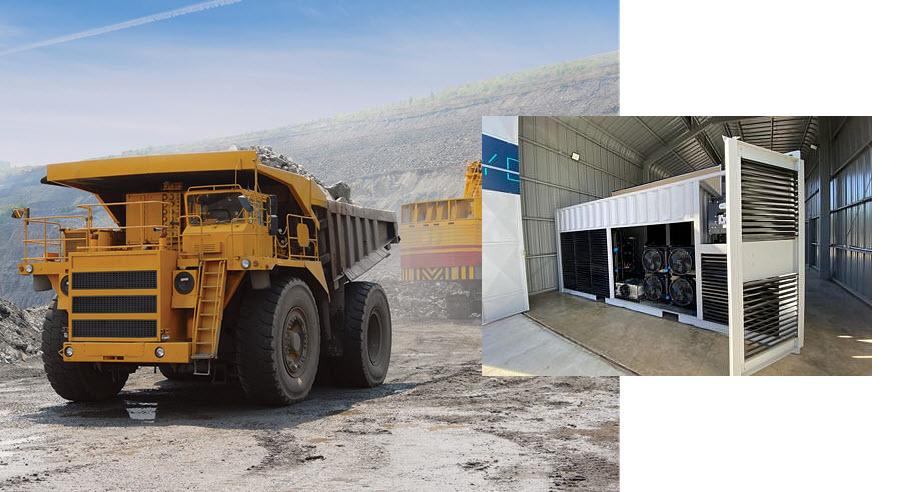Progress is being made in Chile with the CORFO-supported HYDRA Consortium project in Chile which involves the development of a Fuel Cell Electric Vehicle (FCEV) mining truck powered by both hydrogen fuel cells and batteries, which will ultimately be installed at minesite pilot testing locations including Antofagasta Minerals’ Minera Centinela copper operation. A stationary FCEV powertrain prototype was recently completed and presented at an event at the operations of consortium member Reborn Electric Motors SpA in Rancagua. The new powertrain is now undergoing extensive testing and during the next phase the consortium expect to retrofit it into a mining truck thought the exact model it will be fitted to has yet to be finalised. The prototype is composed of a 60 kW fuel cell and 140 kWh battery. Specifically it has a Ballard FCmoveTM-HD fuel cell and a Hexagon Purus type IV H2 storage system.
The HYDRA project has four phases – throughout 2021 and 2022, the engineering and pre-feasibility study for the hydrogen mining truck solution, including the H2 supply chain, is being carried out. In addition, the prototype has been built to evaluate the performance of the fuel cell and battery powertrain under specific mining conditions. Both activities will allow the consortium to validate the business case in more detail. By 2023, the proof of concept will be carried out by converting a mining truck, replacing the diesel engine with a fully electric 2 MW hybrid propulsion system made up of the battery and a fuel cell. The renewable hydrogen will be produced through an electrolysis plant powered by renewable energy. By 2025, the consortium expects to scale the solution from mining trucks to hydrogen by shifting an entire fleet of trucks at a specific mine site. This will allow the mining company to achieve its decarbonisation goals, while promoting the development of renewable hydrogen in Chile, this being the first step to becoming a potential exporter of renewable H2.
Added to that the HYDRA Consortium now has a new member – mining truck and mining excavator major Liebherr Group. It joins ENGIE, Mining3, CSIRO Chile, Mitsui & Co (USA), Inc, Antofagasta Minerals, Thiess, Reborn, Ballard & Hexagon Purus. Liebherr has a large mining truck fleet in Chile at operations like Collahuasi and Radomiro Tomic and has openly stated its multi-pronged approach to helping the mining industry achieve its GHG emission reduction goals. It also has trucks operating with fellow consortium member and global mining contractor, Thiess which has an ongoing contract at the Centinela mine plus others such as at Mantos Copper’s Mantos Blancos operation. Thiess recently added five new electric drive 240 ton Liebherr T 264s to its Chilean fleet, which were manufactured at Liebherr Mining Equipment Newport News Co in Virginia, USA and shipped to Chile for assembly at Liebherr’s La Negra facility before being transported to the customer.

On its path to zero emissions in its mining equpiment, Liebherr’s Oliver Weiss, Executive Vice President R&D, Engineering and Manufacturing said last year: “We have decided to go forward in two steps, immediate and medium-term solutions and initiatives. Firstly, we will offer low carbon emission solutions such as electric drive for all trucks and excavator types, trolley assist and cable reeler beginning in 2022. Additionally, the first renewable fuel option for the internal combustion engine drive train for machines with Liebherr combustions engines is available. And secondly, we will offer proven fossil fuel free mining equipment by 2030 at the latest. The equipment for digging, hauling and dozing will be based on different drive train technologies such as a battery power module, a H2 fuel cell power module and internal combustion engines with several further renewable fuel solutions depending on the equipment type.”









